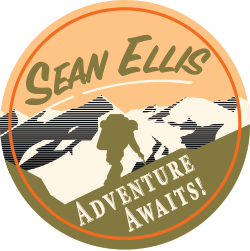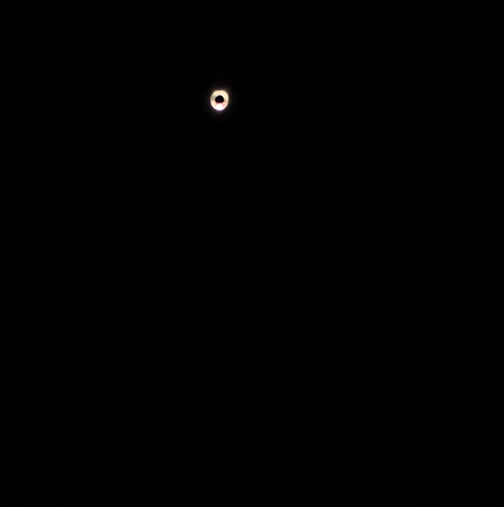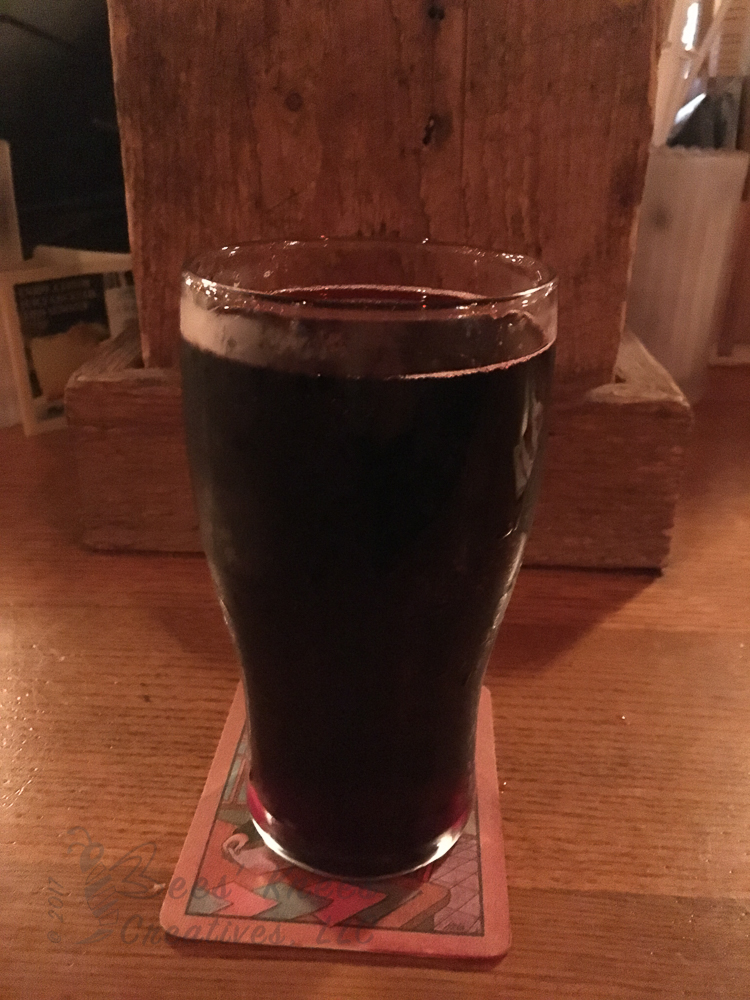The Journey
When I heard that the path of totality for the August 2017 Total Solar Eclipse was going to pass right through my old hometown, I knew it was time for that road trip I’d been postponing!
I consider Newport, Oregon to be my hometown, though in fact I spent most of my childhood about 19 miles inland in a small town called Siletz. Fans of Jeremy Robinson’s Jack Sigler/Chess Team series (to which I have made some contributions) will recognize Siletz as the hometown of Sigler’s adopted daughter Fiona, and may also recall—spoiler alert—that the town was obliterated at the end of INSTINCT. That was all Jeremy’s doing; I don’t think we were even acquainted when he wrote the novel, but it was one of those weird coincidences that we writers like to make into great stories. I’ll get back to Siletz in a bit, but for this trip, Newport was the primary destination, with a quick detour to the Portland area so I could retrieve a couple surfboards I had stashed there several years ago.
The most direct driving route from Phoenix to Portland is 1,300 miles (and change) or about 20 hours behind the wheel. I’ve made that trip before in 2 very long days, stopping just long enough to gas up and make room for more coffee, so I knew it was doable. I figured four days for travel and one to actually chill on the Oregon Coast and watch the sky darken. No problem, right? There’s an old military adage: The battle plan is always the first casualty. Mine went sideways before we even got out of Phoenix due to an unexpected delay putting us two hours behind schedule.
Once we got rolling, we made good time, stopping in Pasadena (my wife’s hometown) just long enough to cruise the turnaround at the entrance to NASA’s Jet Propulsion Laboratories (Security clearance? Just to take a tour? Phhht. I just wanted to get a coffee mug from the gift shop.)
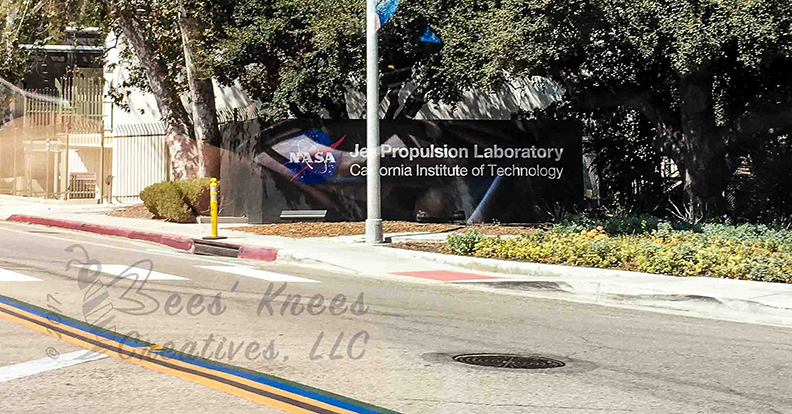
That stop and the late start however put us a little behind schedule, so when the sleep monster put in an appearance just north of Sacramento, we knew it was time to pull over.
Day One, distance traveled 773 miles. Not terrible, but we had hoped to get a bit further.
The Next Day
The next morning, after a bolus of caffeine, it was back to the Interstate. We hit the Oregon border a little after noon and not long after that passed the sign for the Oregon Vortex and House of Mystery in Gold Hill.
Okay, I can hear you rolling your eyes.
‘The Oregon Vortex? Isn’t that the place where your money magically disappears while listening to some hokum about whirlpools of invisible energy?’
Well, yes, if you want to be like that. But I tell lies for a living, so you can see the appeal for me.
As the name suggests, there are two different aspects to the site—the Vortex and the Mystery House. The latter is an old mining cabin that slid down the hill and is now crooked, creating some absolutely trippy perspective effects that will leave you feeling very disoriented. As the guide will tell you, there’s nothing supernatural about this, and the same effect has been reproduced at other “mystery houses” including Confusion Hill near Leggett, California (which we passed on the return trip).
Then there’s the Vortex.
The effect isn’t dramatic. There aren’t swirling clouds of plasma and you won’t see any Lovecraftian entities clawing their way into our world (though that doesn’t mean they aren’t there). But the tour guides will show, through repeated (emphasis on repeated) demonstrations, that the closer you are to the center of the vortex, the more you will appear to shrink from the perspective of an observer further from the center. Skeptics will claim that perspective is exactly what is happening, the optical illusion of forced perspective, the same trick Peter Jackson used to make Elijah Wood into a half-pint hobbit, and this may be true. However, as with any magic show, part of the fun is trying to figure out how the illusion was accomplished, but this is one you have to see with your own eyes. If you ever find yourself in Gold Hill, Oregon, and you’re willing to suspend your disbelief just a little, stop in. Just remember to bring along some Dramamine.
The tour took about 45 minutes, and the drive to and from took probably about that long (go slow on those roads. We had to stop to let a family of deer cross) so it was almost 3 p.m. before we were back on I-5 for the 270-mile drive to Portland. When we got there, we kept going, over the Columbia River to Vancouver, Washington—just to say we did—and then circled back to Hillsboro, Oregon for dinner and libations at McMenamins Cornelius Pass Roadhouse.
Confession—I worked there for about a year many, many, MANY years ago, and I wanted to see what they had done with the place. If you know the Pacific Northwest, then you may already know the McMenamins story. Back in the early 80’s, the McMenamins brothers were early pioneers of the regions craft-brewed-ale scene, with several strip mall brew pubs, which gradually led to their purchasing and restoring several unique historical properties, including the old Imbrie farm house, built in 1854. These properties are truly amazing, and despite the fact that the menu prices reflect Portland’s alarming trend toward hipster gentrification, there’s no better way to cap off a day of adventuring than with a pint of Hammerhead and a Communication Breakdown Burger.
The plan was to grab the surfboards and head for the coast, another two hours or so on the road, but by the time we finished dinner it was already close to midnight and the old sleep monster was scratching at the door, so we grabbed a hotel room—no easy feat considering the price-gouging opportunism of lodging providers—and thus ended Day Two, about a hundred miles short of our destination. Approximate distance driven, 600 miles.
Early the next morning—Sunday—we made our way to Oregon Highway 99, which passes through Yamhill County, Oregon’s hazelnut and wine country, and made a quick stop at the Evergreen Aviation & Space Museum in McMinville, Oregon.
The main attraction here is the Spruce Goose, one of the largest and most expensive (adjusted for inflation) aircraft ever flown. And it was flown, just once; a distance of one mile, topping out at an altitude of 70 feet. But the Spruce Goose is only one of dozens of actual planes and spacecraft you can visit. The Evergreen Museum is truly a testament to the spirit of adventure.
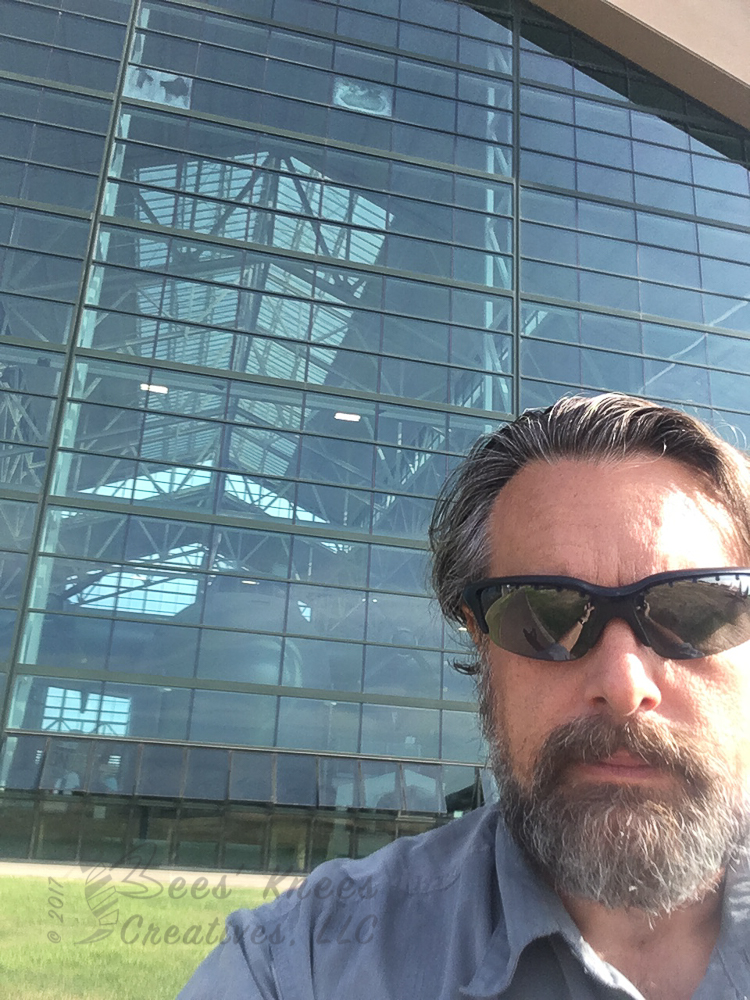
Beyond the fertile valleys of Yamhill County, the highway enters the lush temperate rain forests of the Coast Range—my Oregon. We expected heavy traffic, with lots of fellow eclipse pilgrims making their way to Newport and Lincoln City, both of which were in the path of totality, but the roads were surprisingly clear. Evidently, travelers were scared off by the prophecies of utter mayhem and stayed away, or more likely headed to inland destinations where the weather forecast was more favorable. Bad news for local merchants—one told me “They threw an eclipse and no one came”—but good news for us. We reached Newport around lunchtime and soon headed out to some of my old haunts.
Stomping Grounds
First on the list was Mike Miller Park, a county park and self-guided nature walk located a couple miles south of the Yaquina Bay Bridge. There’s a sign on the highway—just one—but if you don’t know about it, you probably won’t even see the turn off, and who could blame you?
With miles of beaches, gift shops, and tourist attractions—notably the Oregon Coast Aquarium—a hike in the woods may be the last thing on your list, but it was the first thing on mine. Just a little over a mile long, the trail wends over a stabilized sand dune, through older spruce and newer hemlock forests, before crossing a bridge over a beautiful wetland. After several years in the desert, this was just what I needed to reconnect with the Pacific Northwest.
Well, that and the ocean.
Like the Counting Crows song says, “It’s been so long since I’ve seen the ocean….” And that was something I needed to remedy.
We made our way back across the Yaquina Bay Bridge and checked out the Yaquina Bay Lighthouse, which was only operational for three years back in the 1870s, and then headed north a-ways to Agate Beach Wayside park. The parking lot was almost deserted and once we got our toes in the sand, we understood why. A sustained 25 mph north wind provided a free, natural, ex-foliation of our whole bodies as we trudged over the dunes, but trudge we did, until at long last, I felt the frigid water of the Pacific rushing over my feet.
There was one more destination I wanted to visit before ending the day and my wife wanted to pick some blackberries (which grow everywhere on the coast, and yes, you can just park on the roadside and start picking them) so we headed up Highway 20 to Toledo and took the turn off to my old stomping grounds—Siletz.
The road seemed a lot shorter, or maybe I’m just a lot older. After stopping for a selfie in front of my old high school (which actually closed the year after I graduated, though from what I’ve heard, it has since re-opened as a charter school) we picked a couple quarts of blackberries, which I will soon transform into a delicious purple melomel (mead with added fruit). Then it was back to Newport for dinner at Shark’s Seafood Bar and Steamer Co.
Three words: Best. Cioppino. Ever.
The Total Eclipse
A good night’s sleep—probably the best of the trip—followed, and the next morning, we headed down the hill to watch the sun disappear. This was my second eclipse, but as I recall, the first was on an overcast day, and so while I saw the world go dark, I didn’t get to see the solar corona.
This time, it was perfect. Without glasses on, you really don’t notice anything different until it’s nearly three-quarters of total, and even then, the most dramatic change was in the air temperature. We registered a ten-degree F temperature drop where we were. Everything became very still and quiet, and even right up to the last few seconds, you might not visually realize anything is happening without those approved eclipse viewing glasses. I can’t stress that enough. If you want to see an eclipse… or if you just want to SEE period, DO NOT STARE AT THE SUN. At least, not until it disappears completely behind the moon.
If you were lucky enough to see it within the path of totality, you don’t need me to explain just how awe-inspiring it was, and if you didn’t… Believe it or not, words fail me.
I took a time-lapse picture of the eclipse. Even at the moment of totality, the corona was too bright for my phone camera to show anything but a spot of light, but the effect on the hillside in the foreground was stunning.
As light returned to the world, I got some pictures of crescent shadows filtering through the tree branches, but this was definitely the denouement of event, and I was already shifting gears to the journey ahead—another 20 hours behind the wheel, or actually closer to 22 as our plan was to head down Highway 101, taking in the Oregon Coast and the Redwood Highway.
Traffic was a little heavy in places, but not nearly as bad as I thought it would be. We stopped in Florence for a late lunch with friends and then continued on, hoping to make it as far as Eureka before stopping for the night.
See above Re: Battle plans.
Our late start and planned stops meant we only got as far as Crescent City, just over the Oregon border, just 230 miles from Newport. It was dark and there didn’t seem to be much point continuing since the whole point was to SEE the Redwoods, so we found a campground with four tent sites left, threw down our bags and made a passable attempt at getting some shut-eye. Now, if you’ve been keeping track, it was about 1,300 miles from Phoenix to Portland. We got rid of some of that on Sunday getting to Newport, but there’s still 1,100 miles between Crescent City and Phoenix—an estimated 17 hours of driving, not counting delays and required stops for gas and bathroom breaks. And we needed to be back home by Wednesday morning to feed our fur babies.
As an intellectual exercise, it seemed doable. As a practical matter… well, I know for a fact that it CAN be done, but I don’t recommend it.
We did get to see the redwoods though, and they were incredible. Just thinking about how the world has changed in the thousand-plus years some of those trees have been alive is a humbling experience. We would all do well to think about the future generations that will someday contemplate those trees; it might give us some much-needed perspective.
Eventually, the redwoods gave way to California’s wine country which isn’t much fun to look at, and as we we’re burning daylight, looking was about all we could do. We left the campground at about 6:30 in the morning and arrived home at 4 the following morning. Total distance travel, about 1,100 miles.
That would have been ordeal enough, but there was an added wrinkle.
The Hum
Remember those surfboards? Though it pains me to admit it, I haven’t been in the water in… well, a little while. My wet-suit disintegrated about ten years ago and since I’ve been in Phoenix, I’ve found other ways to satisfy the adventure craving. But part of me was hoping there would be time to stop at a surf shop, rent a suit, and paddle out. There wasn’t, and even if there had been, conditions were less than ideal. I’ve surfed less than ideal—every surfer has—because every once in a while, a good wave can show up even on a bad day, but given the time constraints, I knew that probably wasn’t going to be happening. But at least now that I have my surfboards again, all is well with the world, right?
Not quite. My new car doesn’t have a roof rack yet, so I had to improvise a soft rack. I’ve done this before. Cargo straps, bungee cords and pool noodles work just fine… At least, that was how I remembered it. I forgot about… The Hum.
The Hum is what happens when air passes over and under a flat, taut, cargo strap. At town speeds, you won’t even hear it. Get up to about 50 m.p.h. though, and that strap begins vibrating like a string on a cello. It’s constant and a bit irritating, but the thing is, the faster you go, the louder it gets. At freeway speeds—75 m.p.h.—it reaches as high as 98 decibels. Imagine having a food processor running beside your head for twenty hours, and you’ll get an idea of what the trip sounded like. Pure sonic torture.
No amount of twisting the straps made a bit of difference. We picked up some earplugs, which helped but only a little. There were many times along the way where I seriously contemplated taking them into a pawn shop and accepting whatever I could get, or simply tossing them onto the roadside. Now that I’m back, and my hearing has to returned, I’m not entirely sure I made the right choice in keeping them, but perhaps I’ll feel differently once I get a new wet suit, and of course, a proper rack.
So that’s the chronicle of the Great American Eclipse Chase. Even with the maniacal hum and the exhausting pace of the final day, it was a worthwhile endeavor. The next total solar eclipse will happen in 2024 and will be visible across parts of the eastern United States.
Start making your plans now! Maybe I’ll see you there!
